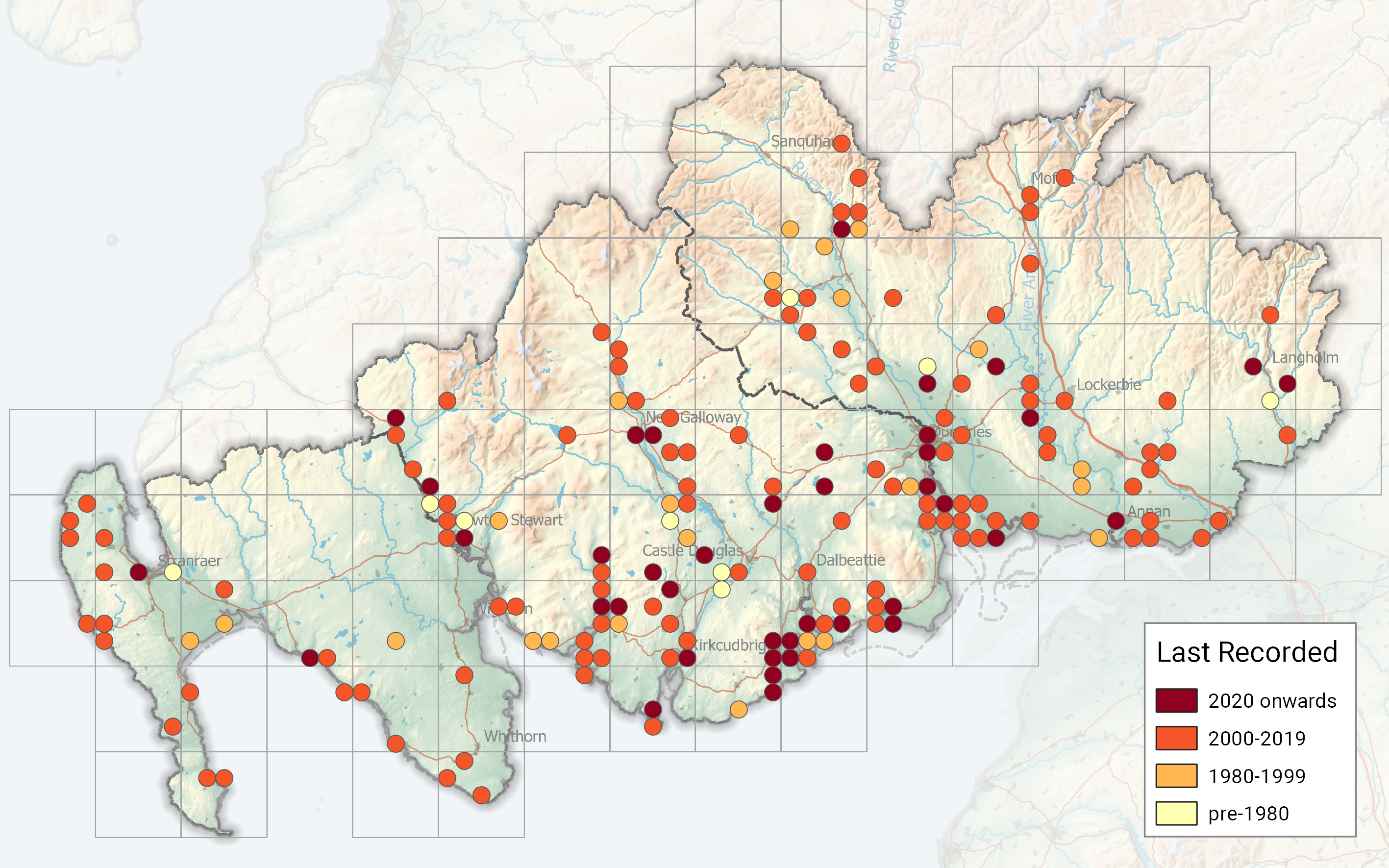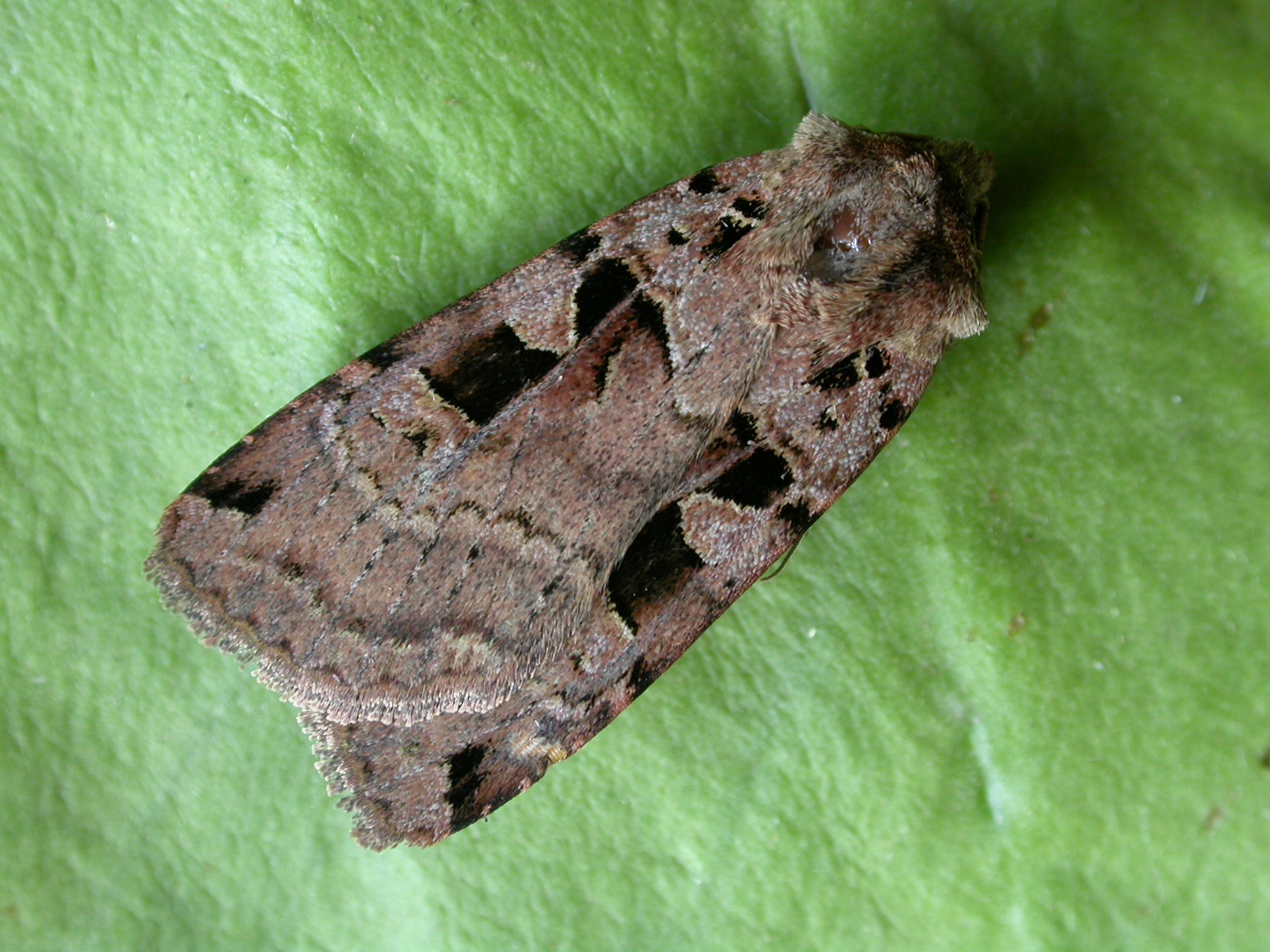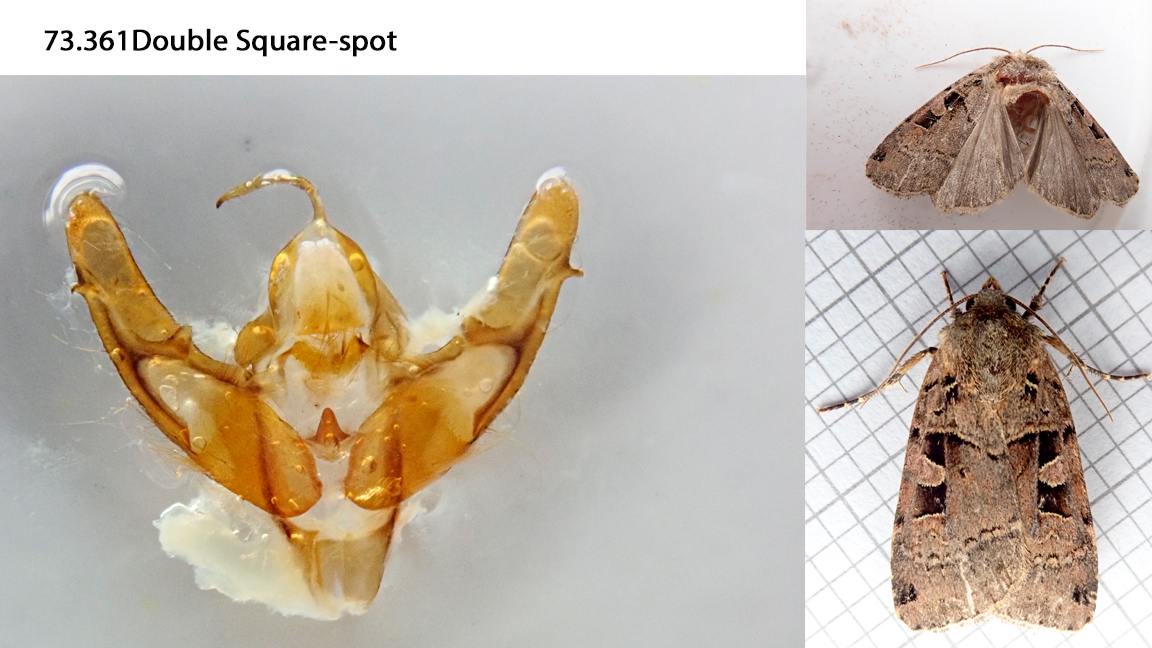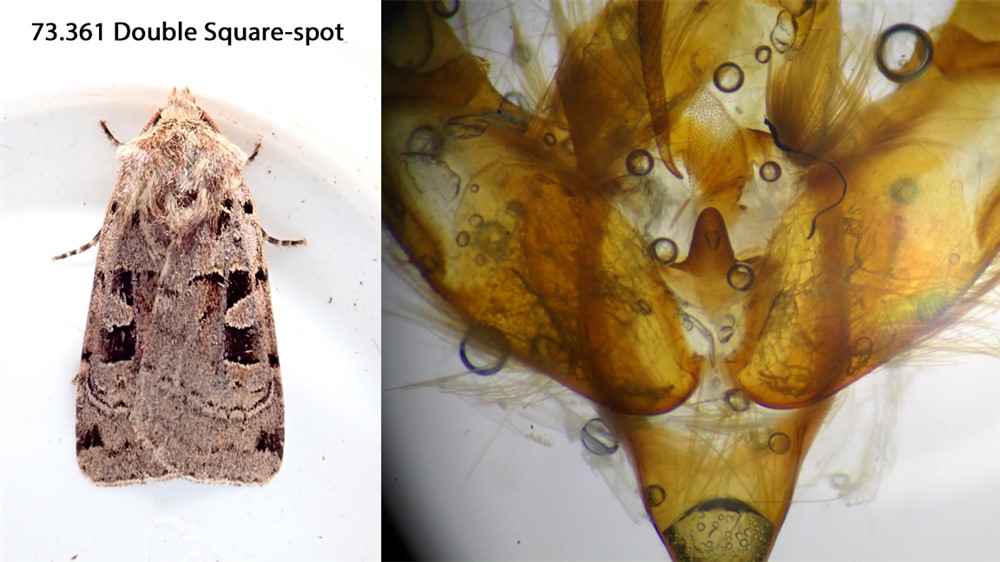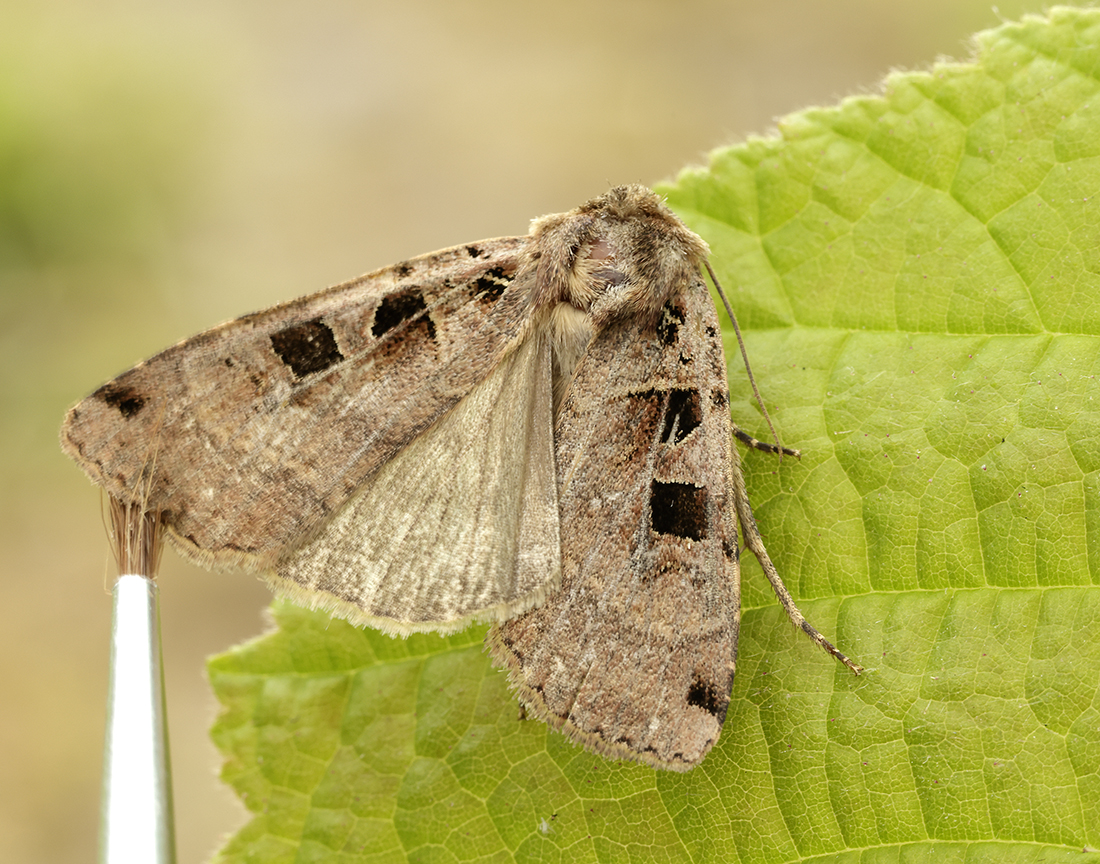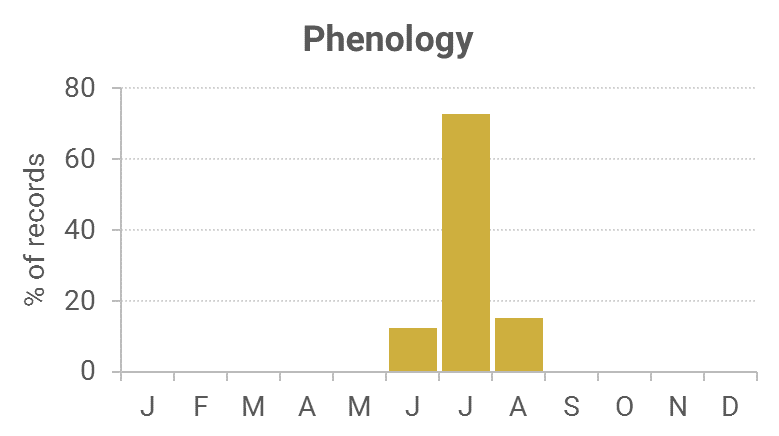Identification
Similar to Triple-spotted Clay and care required with identification. At rest there is less overlap of the forewings resulting in a broader appearance. Ground colour is paler and browner and lacking any purplish hue. Hindwing is darker than Triple-spotted Clay. More information here and here.
Recording Method.
Attracted to light. Also feeds at sugar and flowers.
Life cycle
One generation. Overwinters as a larva, during August to May, feeding by night and hiding in the day. Pupates underground.
Larval foodplants
A wide variety of herbaceous plants including Primrose, Buttercups and Cow Parsley, while in the spring it prefers woody species like Blackthorn and hawthorns.
Habitat
Deciduous woodland as well as lush riverbanks in open country. Also found in gardens.
History
Gordon (1913) stated this species to be generally scarce, but that it came to sugar in woods at Corsemalzie. He had found it plentiful in the larval state on alder when it was feeding by night late April. Earliest date was 25th June 1897.
Sir Arthur Duncan (1909-84) during his lifetime had found it at Closeburn, Tynron and Castlehill, Dumfries (all VC72).
During 1974-89 six of the seven Rothamsted stations managed to record it, Caerlaverock being the odd one out. In the Laurieston/Hensol Estate area it came to the trap regularly during the early 1980s.
The regular trapped sites at Kirkton and Durisdeer (VC72), Cally Woods and Mersehead RSPB (VC73) produced many records of this, one of our commonest noctuids. It has also been found at a wide scattering of other sites across the region.

